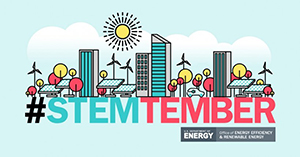The U.S. Department of Energy Office of Energy Efficiency & Renewable Energy has declared September the month to celebrate the importance of STEM education in building a better future for us all. ECS thanks its many members whose careers are dedicated to advancing science education around the world. All our members are invited to support STEMtember. (more…)
Solar is Key to Future Zero-Carbon Grid in DOE Blueprint
Posted on September 14, 2021 by Frances ChavesThe Department of Energy (DOE) Solar Energy Technologies Office (SETO) recently released its Solar Futures Study outlining solar energy’s pivotal role in transitioning to a carbon-free electric grid. The study finds that with aggressive cost reductions, supportive policies, and large-scale electrification, solar could account for as much as 40 percent of the nation’s electricity supply by 2035 and 45 percent by 2050. The ECS community will play a critical role in the technology advances required to make this vision a reality.
Key findings
Pioneering a Vision for Electrochemistry in the Valley of the Sun
Posted on February 5, 2019 by Andrew Ryan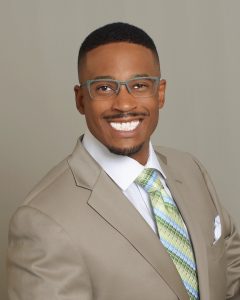 The following guest post is by Telpriore G. Tucker, PhD, founder of the ECS Valley of the Sun (Central Arizona) Student Chapter. In it, Tucker discusses his life and work, his experiences with the Society, and his continual efforts to promote the study of electrochemistry throughout the Valley of the Sun.
The following guest post is by Telpriore G. Tucker, PhD, founder of the ECS Valley of the Sun (Central Arizona) Student Chapter. In it, Tucker discusses his life and work, his experiences with the Society, and his continual efforts to promote the study of electrochemistry throughout the Valley of the Sun.
My name is Telpriore “Greg” Tucker. I’m a postdoctoral research associate in the School of Molecular Sciences at Arizona State University (ASU) in Tempe, AZ. I simply go by Greg on the ASU campus and am more so known as Dr. T in the local community of Greater Metro Phoenix. I’m also the treasurer and a board member of the Arizona Green Chamber of Commerce. Currently, I reside in Scottsdale, AZ, but I’m originally from Colorado Springs, CO.
ECS Fellow Dan Schwartz Wins Highest U.S. Award for STEM Mentors
Posted on July 10, 2018 by Jennifer Ortiz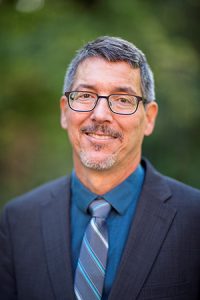
Dan Schwartz, Boeing-Sutter Professor and director of the Clean Energy Institute at the University of Washington
Daniel Schwartz, a University of Washington professor of chemical engineering and director of the Clean Energy Institute, received the Presidential Award for Excellence in Science, Mathematics and Engineering Mentoring from the White House Office of Science and Technology Policy and the National Science Foundation this week. The OSTP and NSF recognized Schwartz for his commitment to interdisciplinary graduate education – helping students apply their research to societal and market needs – along with his dedication to recruiting and supporting Native American STEM (science, technology, engineering and mathematics) scholars at the UW.
“I’m proud to join this cadre of dedicated educators and mentors helping students become leading scientists and engineers,” said Schwartz. “Focusing on clean energy science, engineering and resource management at UW has brought top students from across the country to Seattle, where they have partnered with Northwest tribes and businesses to ensure the future of energy is being created here.”
Starting in 2007, Schwartz launched an NSF-funded interdisciplinary graduate training program that used tribal clean energy research partnerships to attract top Native American students to graduate degree programs in UW’s College of the Environment and College of Engineering. The program was continued and expanded in partnership with Washington State University and Salish Kootenai College with U.S. Department of Agriculture funding, eventually including an undergraduate summer research experience program. Since the program launched, 26 students have completed doctoral degrees, with four awarded to Native Americans and four to other underrepresented minorities. Six masters have also been awarded – including two to Native Americans – and a tribal student-led startup company was founded. A signature achievement was the 2016 Alaska Airlines flight from Seattle to Washington, D.C. on fuel partially made from tribal forest thinnings.
Listen to the ECS Podcast to learn more about Dan Schwatz and open science.
STEM the Divide: Bridging the Gap Between Science and Politics
Posted on January 17, 2017 by Amanda Staller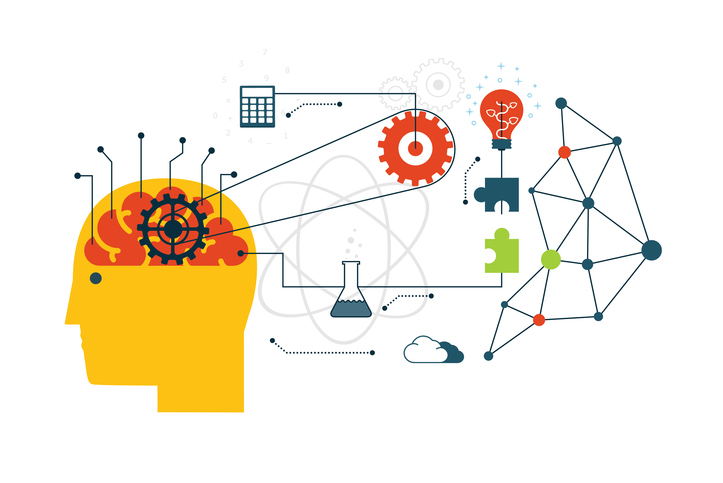 A new initiative that goes by the name, STEM the Divide, is looking to bring scientists out of the lab and into public office.
A new initiative that goes by the name, STEM the Divide, is looking to bring scientists out of the lab and into public office.
STEM the Divide is founded by the nonprofit 314 Action group (homage to Pi), which is focused on building a community for those in STEM and bridging the gap between scientists and public policy. The group’s main goals include: strengthening communications between the scientific community and public officials, providing a voice for the STEM community on social issues, and increasing STEM engagement in the media.
As a branch of 314 Action, STEM the Divide is dedicated to electing more STEM-educated leaders to the U.S. Senate, House, State Executive, and Legislative offices.
“There’s nothing in our Constitution that says we can only be governed by attorneys,” Shaughnessy Naughton, founder of STEM the Divide, tells The Washington Post. “Especially now, we need people with scientific backgrounds that are used to looking at the facts and forming an opinion based on the facts.”
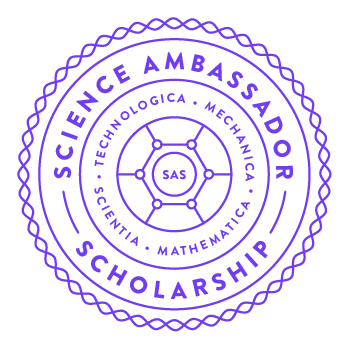 Cards Against Humanity, the comedy card game, has announced that applications are now being accepted for their Science Ambassador Scholarship. The scholarship is geared to award full-tuition to young women seeking undergraduate degrees in STEM.
Cards Against Humanity, the comedy card game, has announced that applications are now being accepted for their Science Ambassador Scholarship. The scholarship is geared to award full-tuition to young women seeking undergraduate degrees in STEM.
This year, one winner will be selected by a board of sixty women in STEM to receive full tuition coverage for up to four years.
“I’m so excited that we’re able to offer another scholarship for a woman studying STEM. A lot of us at Cards Against Humanity have backgrounds in science and tech, and the under-representation of women in these fields is staggering,” says Jenn Bane, the Cards Against Humanity community director. “Ask a kid to draw a scientist, they’ll draw a man in a lab coat, because science and math are historically male-dominated fields. Cards Against Humanity has a large audience, so with the Science Ambassador Scholarship we hope to help change the public perception of what a scientist looks like.”
To apply, applicants must submit a three-minute video explaining a scientific topic they’re passionate about. Find more details here.
PS: If you want to contribute to the fund, you can pick up the Science Pack to add to your Cards Against Humanity Deck. All profits go to the Science Ambassador Scholarship.
In an effort to encourage young girls in STEM, Marvel and the National Academy of Sciences’ Science & Entertainment Exchange are working to creating scientific superheroes through the “Girls Reforming the Future Change” challenge.
In conjunction with the upcoming release of Captain America: Civil War, the two organizations have created a program for girls ages 15 to 18 to submit projects they believe could change the world. Through short videos, each contestant is encouraged to explain a STEM related project that could have a far-reaching impact globally.
The project will select five finalists to receive a $500 savings account. Additionally, one lucky contestant will receive the grand prize of an internship at Marvel Studios.
“I’m really excited to meet these exceptional young women who have STEM backgrounds and who maybe also want to be part of more of a creative- and science-based world,” says Elizabeth Olson, actor in the film. “And Marvel’s a perfect place for that.”
Learn more about the project at captainamericachallenge.com.
Actress, comedian, and author Amy Poehler has put a lot of effort into empowering young girls in science for some time now. Her Smart Girls project took off in 2008, which serves as a place where future women can foster their curiosity and pursue opportunities in STEM. Now Poehler and her Smart Girls group are adding to the women in STEM conversation with their new series, “Experimenting with Megan Amram.”
Amram is a Harvard graduate, author, and comedian. The new web series serves as a perfect platform to continue what she already started in her book Science… for Her!. The parody science text is comedic in nature, but takes a hard look at the gender gap in STEM and offers up some pretty solid science as well.
As an added bonus, you can even get a step-by-step instructions on how to conduct Amram’s experiments.
PS: Head over to the ECS YouTube page to find more educational science videos.
“If you want innovation, if you want to have engineers of tomorrow, you have to have science.”
Those were the words of Bill Nye the Science guy at the 2015 Toshiba/NSTA ExploraVision K-12 national science competition.
A group of students from West Salem High School in Oregon took first place overall in the competition this year with their prototype of programmable bio-scaffolding that could eliminated uncontrollable bleeding from open wounds in those who take blood thinning medications.
Nye has been involved with this competition for more than a decade. Not only does Nye hope that this competition will help encourage young people to value the importance of the sciences, but that it will also highlight the need for gender inclusion in STEM.
“Half the humans are girls and women, so we want half the engineers and scientists to be girls and women,” said Nye.
“The Big Bang Theory” is making history by creating the first television-inspired scholarship to help advance students in STEM.
Students pursing science, technology, engineering, and math degrees at UCLA are eligible for the scholarship, which is currently endowed at $4 million.
“We have all been given a gift with ‘The Big Bang Theory,’ a show that’s not only based in the scientific community, but also enthusiastically supported by that same community. This is our opportunity to give back,” said series creator Chuck Lorre.
This from UCLA:
For the 2015–16 academic year, 20 Big Bang Theory scholars will be selected to receive financial assistance. Each year in perpetuity, five additional scholars will be chosen. Scholarships will be awarded based on financial need to low-income students who have earned admission to UCLA based on academic merit but need additional support to bridge the gap between typical levels of financial aid and the cost of attendance.


